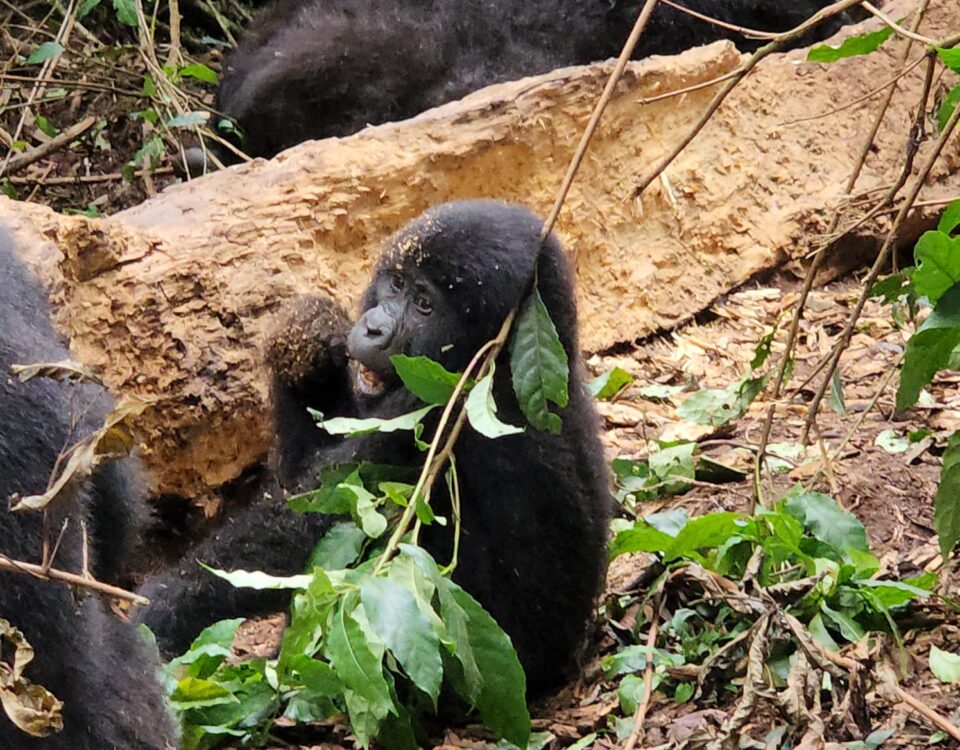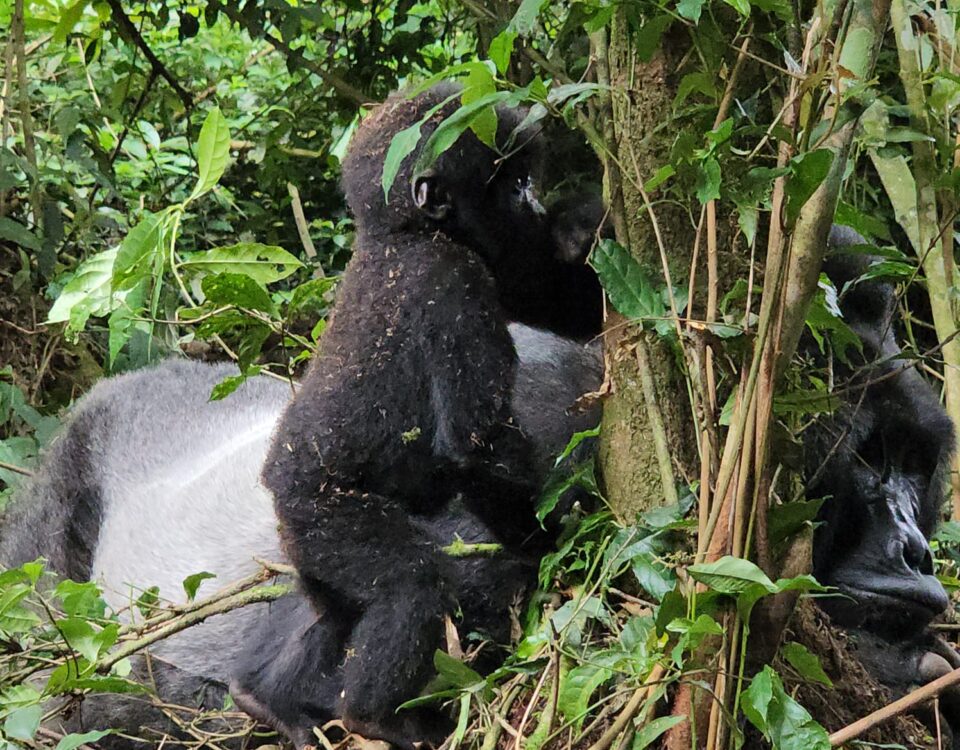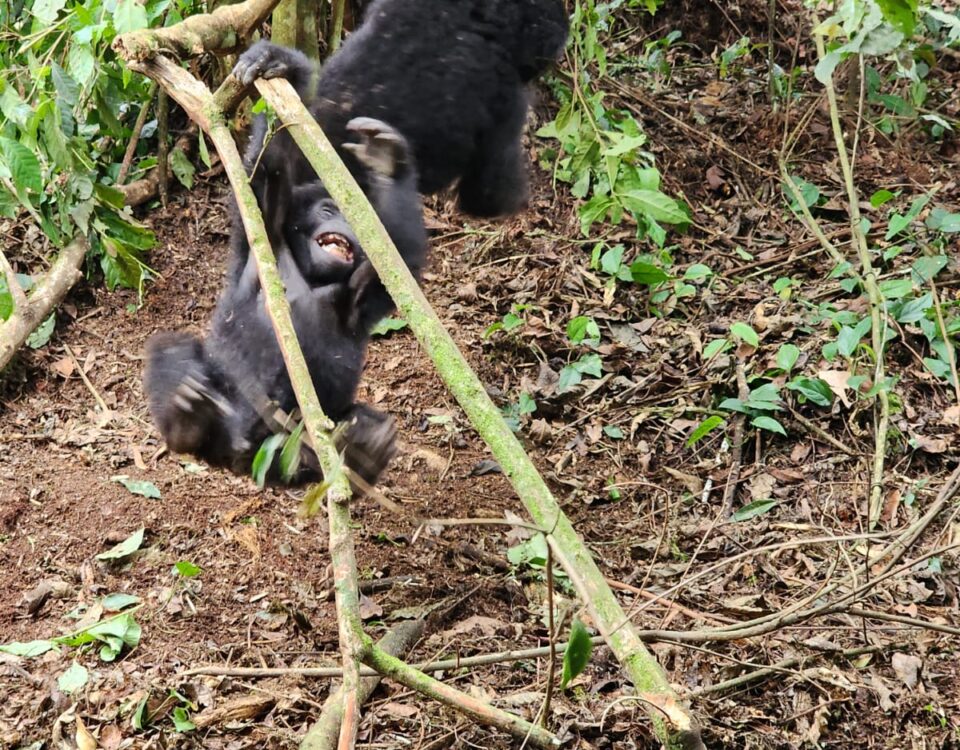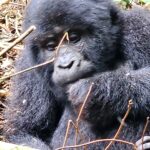
How Many Gorilla Families Are in Volcanoes National Park?
March 28, 2025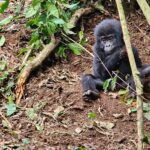
Can I Visit Volcanoes National Park on a Day Trip?
March 28, 2025How is Volcanoes National Park Contributing to Conservation Efforts?
How is Volcanoes National Park Contributing to Conservation Efforts? Volcanoes National Park, located in the stunning Virunga Mountains of Rwanda, stands as one of the most vital wildlife conservation areas in Africa. Not only is it home to the critically endangered mountain gorillas, but the park also plays a key role in the protection and preservation of a wide range of species, making it a cornerstone of Rwanda’s conservation efforts. From anti-poaching initiatives to community involvement, the park is actively contributing to the global fight for biodiversity conservation. This write-up will delve into the various ways in which Volcanoes National Park is helping to safeguard the future of wildlife and ecosystems while engaging local communities and eco-tourists.
Gorilla Conservation: A Global Effort to Save the Mountain Gorilla
At the heart of Volcanoes National Park’s conservation efforts lies the protection of the mountain gorillas. These magnificent creatures are one of the world’s most endangered species, with only around 1,000 individuals remaining in the wild, most of which reside in the Virunga Mountains. Volcanoes National Park is crucial to the survival of mountain gorillas, and significant efforts are being made to ensure their protection and monitoring.
One of the park’s primary conservation strategies is the implementation of gorilla monitoring and research programs. By closely tracking gorilla groups through GPS and tracking techniques, park rangers are able to ensure their safety and well-being. Additionally, the park has a strict policy against poaching and human-wildlife conflict, which has contributed to a stable and slowly growing gorilla population over the years. Anti-poaching units are actively patrolling the park to prevent illegal hunting, while also addressing habitat encroachment from local communities.
The success of these efforts has been remarkable, with the mountain gorilla population showing signs of recovery. The creation of eco-tourism programs, like gorilla trekking, has also provided an economic incentive for conservation. Visitors pay a premium to trek through the forest and observe these animals in their natural habitat, creating a sustainable funding source for the park’s conservation initiatives. The revenue generated through tourism directly supports the protection and research efforts for the mountain gorillas and other wildlife in the park.
Protecting Other Endangered Species in Volcanoes National Park
While the mountain gorillas are undoubtedly the star attraction of Volcanoes National Park, they are not the only endangered species that benefit from conservation efforts in the area. The park is also home to several other vulnerable species, including the golden monkey, the forest elephant, and numerous bird species.
Golden monkeys are another highlight of the park, and their protection is closely tied to the preservation of the bamboo forests that provide their habitat. These monkeys are listed as endangered, and the park has dedicated research and conservation efforts to monitor their populations. The health of the bamboo forest is critical not just for the golden monkeys, but also for other species like the giant forest hog and various types of birds, all of which rely on this unique ecosystem.
Forest elephants, a smaller and more elusive relative of the African elephant, are also found in the park. The protection of their habitat is essential, as these elephants play a significant role in seed dispersal, which helps maintain the biodiversity of the area. Conservation efforts aimed at reducing poaching and protecting the forest from illegal logging contribute to the survival of these elephants.
Bird watchers also flock to Volcanoes National Park to observe rare species like the Rwenzori turaco, a vibrant and colorful bird endemic to the region. With fewer than 100 individuals left in the wild, the conservation of their habitat is vital for their survival. Efforts to preserve the park’s forests and ensure their continued growth contribute significantly to the protection of these birds and other wildlife.
Community Involvement: Empowering Local Communities through Conservation
Volcanoes National Park’s conservation success would not be possible without the active participation of local communities. The park’s management recognizes that the local people living in and around the park are key stakeholders in its conservation efforts. As a result, there has been a strong focus on involving local communities in sustainable conservation programs.
One of the most important ways in which local communities contribute is through eco-tourism. The park employs local guides, porters, and park rangers, creating jobs and economic opportunities for people who might otherwise have relied on illegal hunting or farming in the park. This eco-tourism model not only provides a steady income for local people but also helps to foster a sense of ownership and responsibility toward conservation.
In addition, the park has initiated community development programs that focus on providing education, healthcare, and alternative livelihoods to local populations. For example, the Iby’Iwacu Cultural Village offers tourists the opportunity to experience Rwandan culture while learning about the importance of conservation. Through these programs, local communities are empowered to see the value of preserving their natural heritage and wildlife, which, in turn, helps to reduce human-wildlife conflict.
By directly involving local communities in conservation activities, Volcanoes National Park is building a sustainable future where both people and wildlife can thrive. This approach has helped create a model for conservation that other parks and regions can replicate.
Anti-Poaching and Habitat Protection: A Holistic Approach to Conservation
One of the most critical aspects of Volcanoes National Park’s conservation efforts is the implementation of robust anti-poaching initiatives. Poaching, both for bushmeat and illegal trade in wildlife, remains one of the greatest threats to species in the park. To combat this, the park has deployed highly trained anti-poaching units, using both traditional methods and modern technology to track and prevent illegal activities.
Park rangers patrol the park daily, ensuring that no poachers are entering the area, while using tracking devices and surveillance systems to monitor the movement of both wildlife and humans. These measures have been crucial in reducing the illegal hunting of mountain gorillas and other species. Additionally, Volcanoes National Park works in collaboration with neighboring parks in Rwanda and Uganda to ensure that cross-border poaching is also addressed.
In terms of habitat protection, the park works to preserve the forests, bamboo groves, and grasslands that provide essential ecosystems for its wildlife. Reforestation programs are actively being undertaken to restore areas of the park that have been damaged by human activity, such as logging or agricultural encroachment. By ensuring the long-term health of the park’s ecosystems, Volcanoes National Park is safeguarding the future of its wildlife and the natural beauty that makes it so special.
Cultural Experience: Connecting People with Nature
A unique aspect of Volcanoes National Park’s conservation efforts is the cultural experience it offers to visitors. Eco-tourism is not just about observing wildlife; it is also about learning from and engaging with the local communities who live alongside the park. The Iby’Iwacu Cultural Village provides tourists with the opportunity to experience the rich traditions of Rwanda, from music and dance to traditional crafts and cuisine.
By incorporating cultural experiences into the park’s tourism programs, Volcanoes National Park promotes sustainable tourism that benefits both the environment and local communities. Visitors leave with a deeper understanding of the delicate balance between conservation and cultural heritage, while local communities gain financial support and global recognition for their efforts to preserve both their natural and cultural landscapes.
Conclusion: A Sustainable Model for Conservation
Volcanoes National Park’s contributions to conservation go far beyond the protection of mountain gorillas. Through its efforts to conserve other endangered species, engage local communities, combat poaching, and protect habitats, the park has become a model for sustainable conservation. The integration of eco-tourism and community development ensures that conservation efforts remain sustainable, providing long-term benefits for both wildlife and people. Volcanoes National Park’s success story is a testament to the power of collaboration between governments, conservationists, local communities, and tourists in preserving our planet’s most precious ecosystems.


